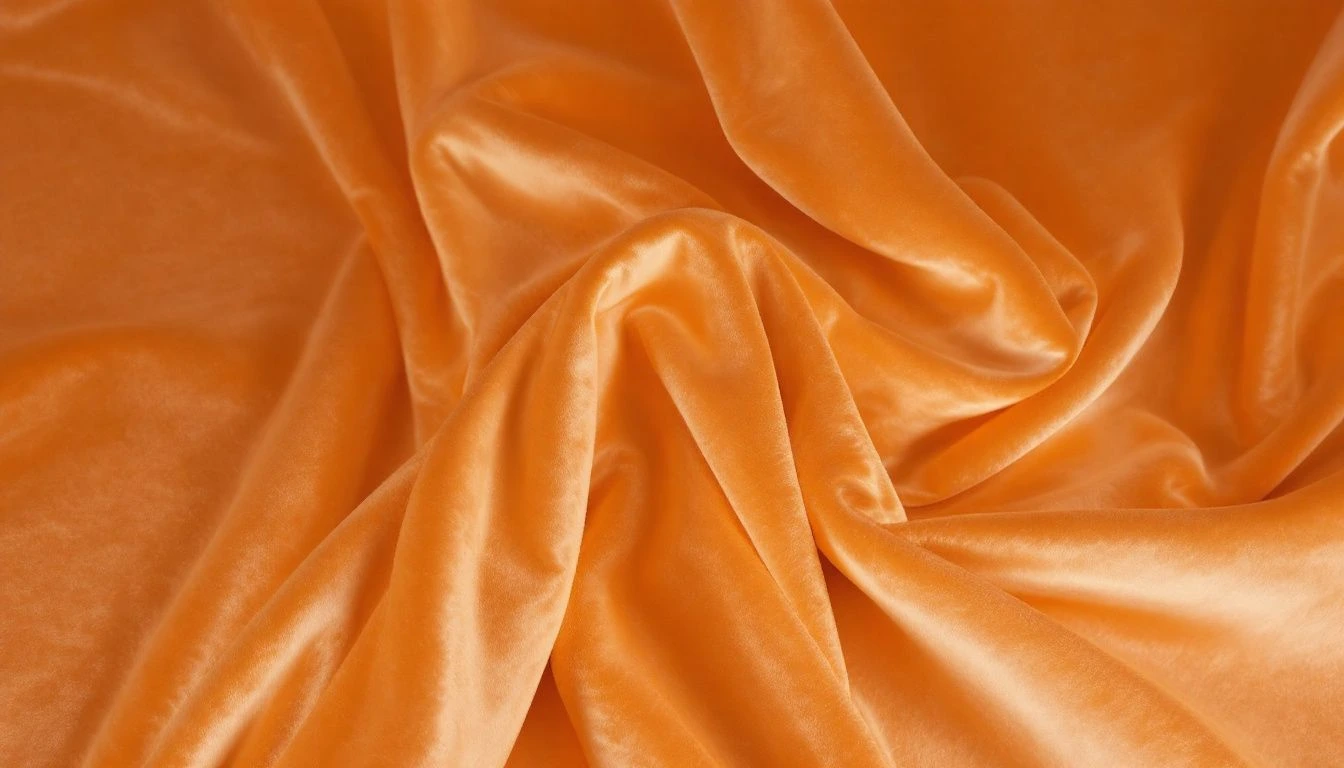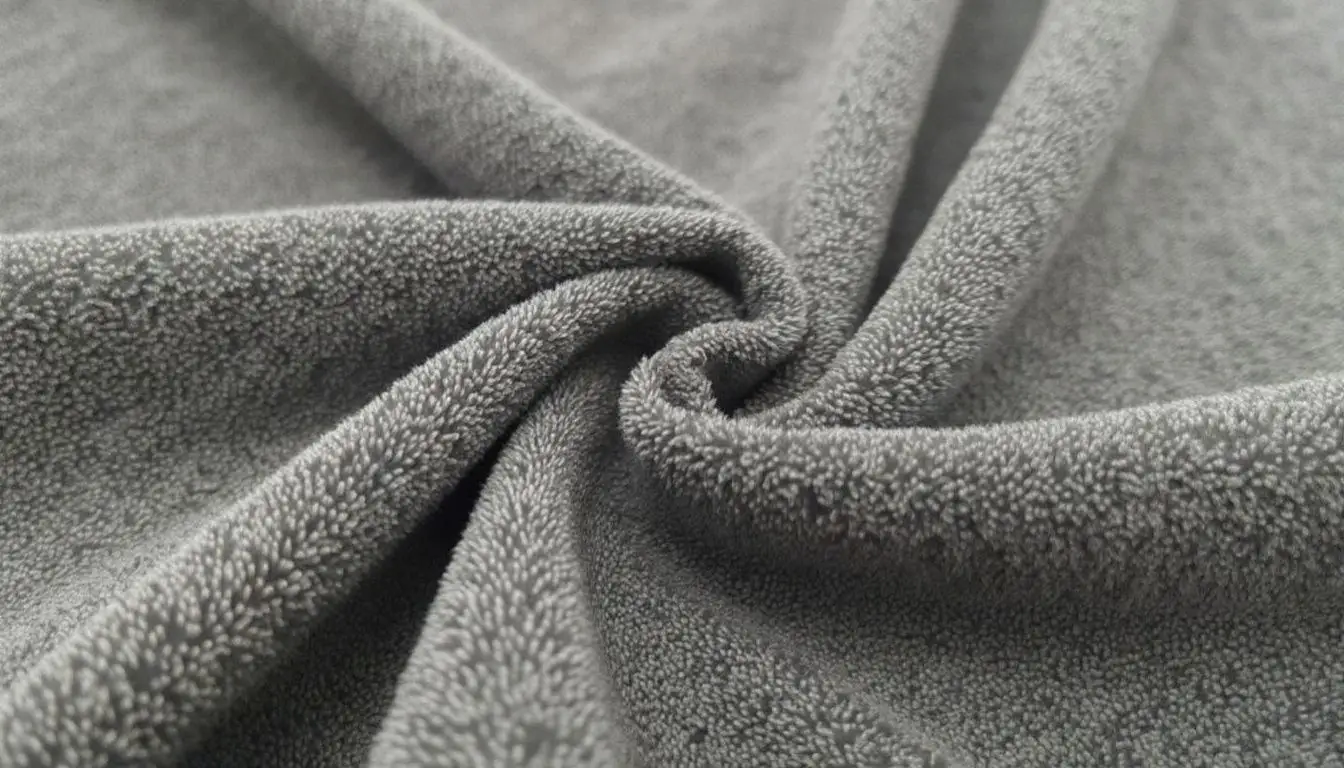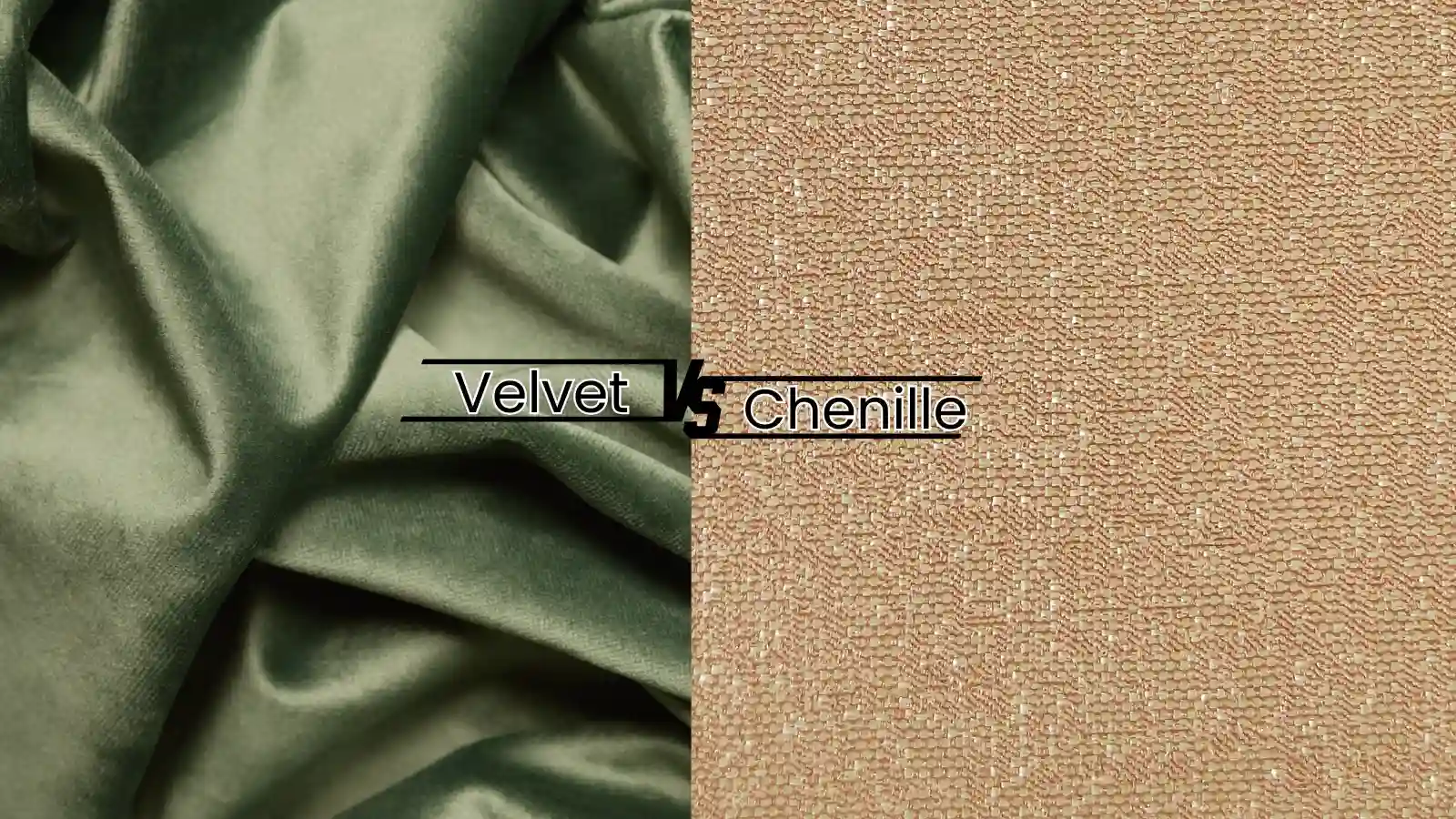When choosing between velvet and chenille, you face more than just a decision about texture. You're considering ambiance, practicality, and style.
Velvet's luxurious sheen can bring you into an elegant haven. But it demands careful upkeep to maintain its allure. In contrast, chenille offers a cozy, inviting feel, often at a more accessible price point.
The decision isn't as straightforward as it seems. Understanding the nuances of each fabric might just tip the scales in unexpected ways.
Key Takeaways
- Chenille offers a soft, raised texture, while velvet has a smooth, dense surface.
- Velvet's light reflection enhances color vibrancy. Chenille's muted absorption creates a relaxed look.
- Chenille is more durable and abrasion-resistant, ideal for upholstery in high-traffic areas.
- Velvet requires meticulous maintenance, including regular vacuuming and careful spill management.
- Chenille is generally more affordable, while velvet, especially silk one, can be costly.
What Is Velvet Fabric?

As we delve into the realm of chenille fabric, let's take a closer look at what makes velvet a luxurious fabric.
History and Origin
Velvet has a rich history, originating in the 13th century in the Middle East. It later became popular in Italy and France.
It's soft and fluffy, and its name comes from the Latin word "villus," which means "shaggy hair." It became a luxury fabric because it was initially made from silk and worn by royalty. Its two-layer construction and special threads give it deep colors and a fancy look.
Characteristics
Velvet is known for its opulent texture. It stands out due to its soft, dense pile. Its smooth surface precisely reflects light, intensifying its rich color and elegance.
While velvet is often associated with formal settings, it adapts to casual spaces as well. It provides unmatched sophistication. Its versatility also makes it a favored choice for fashion and home decor.
Applications and Uses
In fashion, velvet is famous for garments like dresses and blazers. It's also popular for accessories such as scarves and gloves.
Home decor often features velvet in sofas, chairs, and cushions. It's also popular in bedding for quilts and pillow covers.
Velvet enhances event decorations. It's also popular in crafts, luxury packaging, and musical instrument cases.
Pros and Cons
The advantages include velvet's plush texture and elegant draping. It's ideal for items like sofas and curtains.
But its maintenance demands, such as regular vacuuming and brushing, can be a drawback. It's also susceptible to crushing and staining, especially in silk variants.
What Is Chenille Fabric?

To better compare chenille vs velvet, let's first explore what chenille fabric is and what makes it so unique.
History and Origin
Chenille is a fabric derived from the French word for "caterpillar." It emerged in 18th-century France, and its soft, fuzzy texture resembles that of the insect.
Chenille is made using a unique weaving technique. This method involves twisting warp threads and cutting weft threads, creating a soft, raised texture.
The origin of chenille fabric is marked by its versatility. Its iridescent quality and softness make it a sought-after choice in the textile industry.
Characteristics
A defining characteristic of chenille fabric is its soft, raised texture. Its production process gives chenille its caterpillar-like appearance, a nod to its French namesake.
Chenille's charm lies in its casual yet inviting texture. Versatile in composition, chenille can be crafted from cotton, rayon, silk, or synthetic fibers, each lending unique properties to the fabric.
Chenille's durability and abrasion resistance make it ideal for home decor items. It excels in heat retention, making it a popular choice in cooler climates.
Applications and Uses
Incorporating chenille into your design scheme brings both aesthetic and functional benefits.
Chenille is usually used in clothing like sweaters and shawls, providing warmth and style.
It's ideal for upholstery, enhancing sofas and decorative pillows with its plush feel. This fabric's ability to create an inviting space makes it perfect for blankets, throws, and curtains.
Pros and Cons
Among the advantages of chenille is its durability and high abrasion resistance. Its excellent heat retention adds warmth, perfect for blankets and cozy garments.
However, chenille's disadvantages include its tendency to stretch and shrink, requiring careful maintenance. Additionally, while it boasts vibrant colors, it's not as colorfast as some synthetics, leading to potential fading.
Velvet Vs Chenille: How to Choose Between Them

Understanding the differences between the two fabrics will enhance your ability to choose the right material.
Texture and Feel
Velvet's dense, smooth surface delivers a luxurious feel. Its uniform pile provides a rich, plush sensation. It absorbs light, enhancing its depth and color vibrancy.
In contrast, chenille features a soft, raised texture, akin to the fuzziness of a caterpillar. Its varied pile heights create a tactile softness, reflecting light for a brighter appearance.
Durability and Maintenance
Velvet's plush pile is susceptible to wear, especially when crushed or flattened. Maintenance requires diligence. Regular vacuuming and prompt spill management are critical for upholstery items to prevent stains. Velvet's propensity to fade under sunlight further impacts its longevity.
In contrast, chenille, with its robust weave, exhibits superior durability. This makes it a preferred choice for environments demanding resilience. For home decor items, chenille requires periodic professional care, typically every 1-2 years.
Cost Comparison
In the cost comparison, chenille is generally more affordable. It can be made in different ways. So it offers options from budget-friendly synthetic blends to high-end cotton versions.
Compared to chenille, velvet, particularly silk velvet, can be quite costly. This is because of its opulent natural fibers and complex production methods. The cost of velvet varies with fiber content. Synthetic options like polyester reduce expenses compared to silk or cotton.
Environmental Impact
Velvet is traditionally made from silk but now often uses synthetic materials like polyester. This can harm the environment due to their production and non-biodegradable nature.
Chenille, made from cotton or synthetics, also poses environmental issues. Cotton requires a lot of water and pesticides, while synthetics share similar problems with velvet. Sustainable options include organic cotton chenille and recycled polyester velvet.
Reducing their environmental impact depends on sustainable sourcing, production, and recycling.
Conclusion
Consider their distinct properties and historical contexts when choosing between chenille and velvet fabric. Velvet offers a luxurious sheen ideal for formal spaces but demands meticulous care. Chenille provides durability and a plush texture, making it perfect for casual settings.
Your selection should align with your demands and maintenance capabilities. This guarantees both beauty and practicality.
Learn more fabric knowledge on the Longan Craft Blog, and dive into the fabric world with Longan Craft!
FAQs
Is Chenille or Velvet Better?
You decide based on usage. For high-traffic durability, choose chenille; its yarn structure withstands wear. Opt for velvet's opulence in formal spaces, but remember its delicate nature.
Are Velvet and Chenille Yarn the Same?
No, they're not. Velvet's crafted from a dense pile fabric. Chenille yarn features its own fuzzy, caterpillar-like texture.
What Are the Disadvantages of Velvet Upholstery?
Velvet crushes easily and is sunlight-sensitive. It attracts dust so it requires frequent maintenance. Additionally, it's expensive, so it may not fit all budgets. Historically, it has been delicate compared to modern alternatives.


0 comments